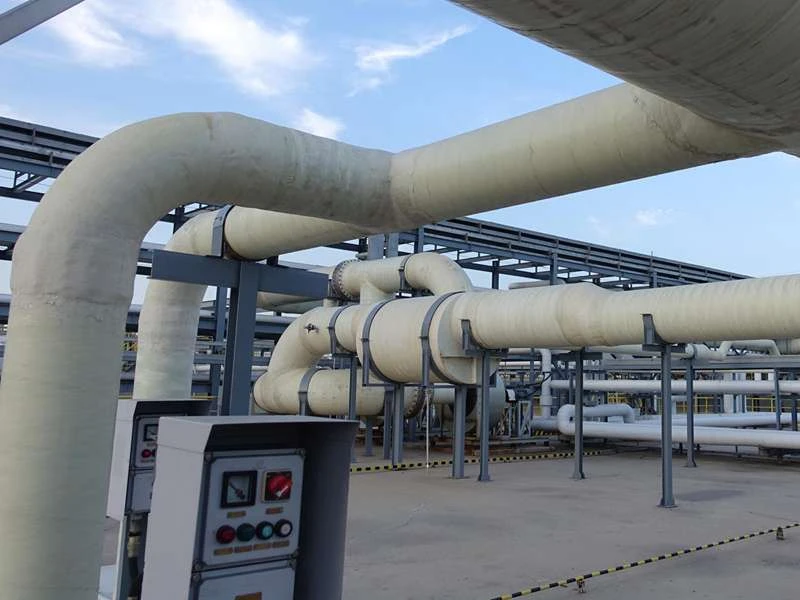grp storage tank
Understanding GRP Storage Tanks A Comprehensive Overview
Glass Reinforced Plastic (GRP) storage tanks have become increasingly popular in various industries due to their exceptional durability and versatility. Made from a composite material that combines glass fibers with a plastic resin, GRP tanks offer numerous advantages over traditional storage solutions such as concrete or metal tanks. This article explores the features, benefits, applications, and maintenance of GRP storage tanks.
Features of GRP Storage Tanks
GRP storage tanks are known for their lightweight yet robust structure. The manufacturing process involves layering glass fibers within a resin, creating a strong composite that can withstand various environmental stresses. These tanks also feature corrosion resistance, which allows them to store aggressive liquids without deteriorating over time. Additionally, GRP is adaptable to a wide range of shapes and sizes, making it possible to customize tanks for specific storage needs.
Advantages of Using GRP Storage Tanks
1. Corrosion Resistance One of the standout benefits of GRP tanks is their ability to resist corrosion. Unlike metal tanks, which can rust, or concrete tanks, which can crack and degrade, GRP tanks maintain their integrity and appearance over time.
2. Lightweight The lightweight nature of GRP tanks facilitates easier transportation and installation. This characteristic is particularly advantageous for projects with weight limitations or those in remote locations.
3. Cost-Effectiveness While the initial investment in GRP tanks might be higher than some traditional options, their long lifespan and low maintenance requirements often result in lower overall costs in the long run.
grp storage tank

4. Thermal Insulation GRP tanks can provide better thermal insulation compared to metal tanks. This feature is crucial for storing temperature-sensitive materials, reducing heat exchange and improving efficiency.
5. Versatility GRP tanks can be used in various applications, from storing water and chemicals to fuel and wastewater. Their adaptability makes them suitable for industries such as agriculture, construction, food processing, and more.
Applications of GRP Storage Tanks
GRP tanks are utilized across many sectors due to their versatile properties. In chemical processing, they storage corrosive substances safely. In water treatment facilities, they store potable water and chemicals for purification. Agricultural industries use GRP tanks for irrigation and storing fertilizers. Additionally, in the oil and gas sector, GRP tanks are employed for storing fuel and chemicals, showcasing their ability to handle hazardous materials.
Maintenance of GRP Storage Tanks
While GRP tanks are designed for durability, regular maintenance is essential to ensure optimal performance. Routine inspections for signs of damage, such as cracks or leaks, should be conducted. Cleaning the tank periodically can prevent the buildup of residues that could affect the quality of the stored product. Furthermore, maintenance of fittings and connections is crucial to avoid leaks and ensure the tank operates efficiently.
Conclusion
GRP storage tanks represent a modern solution to the challenges of storage in various industries. With their corrosion resistance, lightweight structure, and versatility, these tanks offer significant advantages over traditional materials. As industries continue to evolve, the demand for efficient and durable storage options will likely lead to the increased adoption of GRP technology, ensuring that it remains at the forefront of storage solutions for years to come.
Latest news
-
Oblate Tanks: Space-Saving, Durable Liquid Storage SolutionsNewsAug.27,2025
-
High-Performance Piping System Solutions for Industry & Commercial UseNewsAug.26,2025
-
Precision Fittings: Durable & Reliable Industrial & Plumbing SolutionsNewsAug.25,2025
-
Practical Steps: Unlock Success with Our Proven GuidesNewsAug.24,2025
-
Transport Tanks: Safe, Durable & Efficient Liquid HaulingNewsAug.23,2025
-
High-Quality Piping Systems for Efficient Flow & DurabilityNewsAug.22,2025











